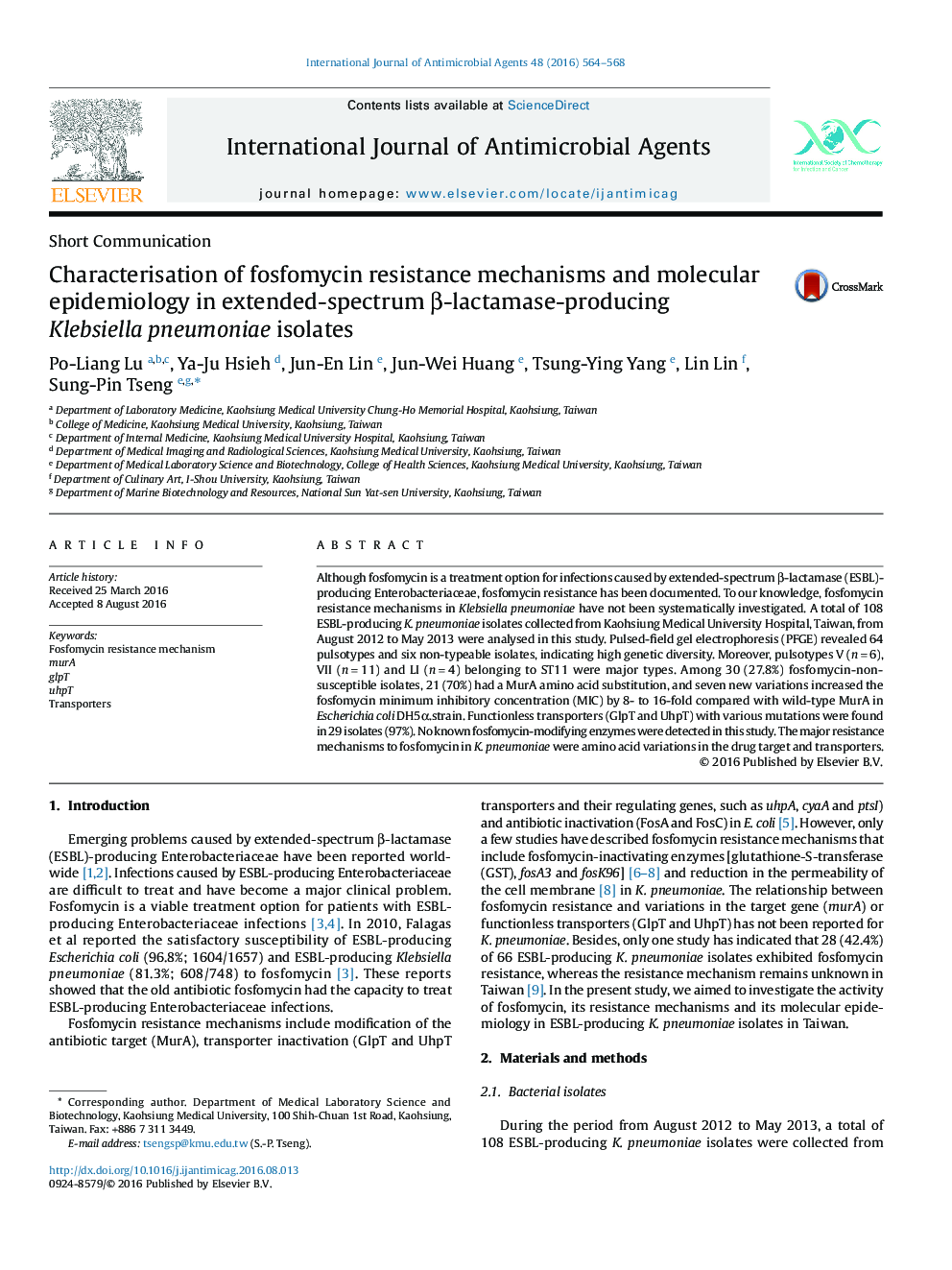| Article ID | Journal | Published Year | Pages | File Type |
|---|---|---|---|---|
| 5667068 | International Journal of Antimicrobial Agents | 2016 | 5 Pages |
â¢Resistance mechanisms were amino acid variations in MurA, transporters (GlpT and UhpT) and regulatory genes (uhpA and ptsI).â¢High genetic diversity among extended-spectrum β-lactamase-producing K. pneumoniae.â¢Pulsotypes V, VII and LI belonging to T11 were major pulsotypes.
Although fosfomycin is a treatment option for infections caused by extended-spectrum β-lactamase (ESBL)-producing Enterobacteriaceae, fosfomycin resistance has been documented. To our knowledge, fosfomycin resistance mechanisms in Klebsiella pneumoniae have not been systematically investigated. A total of 108 ESBL-producing K. pneumoniae isolates collected from Kaohsiung Medical University Hospital, Taiwan, from August 2012 to May 2013 were analysed in this study. Pulsed-field gel electrophoresis (PFGE) revealed 64 pulsotypes and six non-typeable isolates, indicating high genetic diversity. Moreover, pulsotypes V (nâ=â6), VII (nâ=â11) and LI (nâ=â4) belonging to ST11 were major types. Among 30 (27.8%) fosfomycin-non-susceptible isolates, 21 (70%) had a MurA amino acid substitution, and seven new variations increased the fosfomycin minimum inhibitory concentration (MIC) by 8- to 16-fold compared with wild-type MurA in Escherichia coli DH5α.strain. Functionless transporters (GlpT and UhpT) with various mutations were found in 29 isolates (97%). No known fosfomycin-modifying enzymes were detected in this study. The major resistance mechanisms to fosfomycin in K. pneumoniae were amino acid variations in the drug target and transporters.
